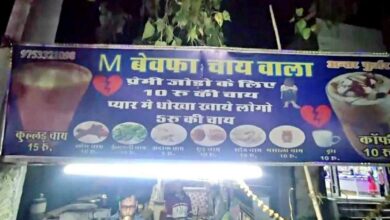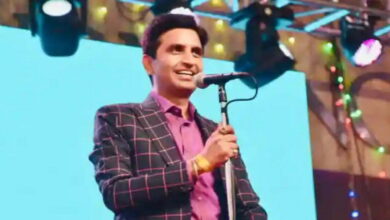Whose flame was…

Mulayam Singh Yadav had a flair. From becoming an MLA at the age of 28 to being an MP at the age of 82, Mulayam Singh’s life continued till he died at Medanta Hospital in Gurugram. He did a lot of politics and fought fiercely against many big parties, but there is no party whose leaders do not have goodwill towards him. He started Congress Mukt Bharat long before Narendra Modi. Mulayam Singh had freed the country’s largest state, Uttar Pradesh from the Congress, despite this, he maintained his alliance with the Congress. He had fired at the kar sevaks going to Ayodhya, due to which the BJP kept calling him ‘Mulla Mulayam’ but when he fell ill, Defense Minister Rajnath Singh went to the hospital to see him, when he died, Amit Shah went to the hospital and paid tribute to him. And Prime Minister Narendra Modi himself, the Hindu Hriday Samrat, shared eight pictures and paid a very heartfelt tribute, describing him as a soldier of democracy. While his Chief Minister, his ally BSP leader Mayawati was attacked, which the country knows as the Guest House scandal, yet Mayawati fought the last Lok Sabha elections together with her party.
Mulayam Singh was such a leader, with whom he fought, with whom he competed, with whom he defeated, with whom he ended his life-long relationship. Their political rivalry and personal relationship remained completely separate. In this sense, it can be said that he was the leader of all contradictions. He went ahead with Mandal politics but did not have any enmity with the forward castes. Amar Singh was also among his close leaders, there was also Janeshwar Mishra and there was also Kunwar Revati Raman Singh. He continued to do socialist politics throughout his life and also held five-star events in Saifai, where film stars used to gather. He used to talk about the last man of the country’s most backward state, work for its empowerment and also maintain friendship with Amitabh Bachchan and Anil Ambani. He was a Khanty socialist but established every member of his family and extended family in politics. In this respect, his life was like an open book. Public conduct as private life! If you compare him with any other leader, then the closest comparison is made with Chandrashekhar. It is also a coincidence that both of them kept doing politics together for many years. Apart from familyism, Chandrashekhar and Mulayam Singh will see a lot of similarity.
Mulayam Singh’s politics started in 1967, when he became MLA from Jaswantnagar seat of Etawah at the age of 28 on a Samyukta Socialist Party ticket. But politics took off when VP Singh sounded the bugle against the Congress and the 1989 elections were held on the issue of Bofors. Mulayam Singh became the Chief Minister of Uttar Pradesh for the first time after winning the same election. But the Mandal and Kamandal politics that followed after that drove him out of power. On one hand, while Mandal’s politics strengthened Lalu Prasad’s power in Bihar, Mulayam’s politics weakened in Uttar Pradesh. He had to join hands with Kanshi Ram to come back to power in 1993. Mulayam Singh, Lalu Prasad, Sharad Yadav, Ram Vilas Paswan and Nitish Kumar had the toughest path among the five leaders of North India who came out of Mandal’s politics. The reason for this was that the population structure of Uttar Pradesh was different from that of Bihar. Due to the large upper caste and Dalit population, Mandal’s politics did not have the same space as it was in Bihar. Despite this, from 1989 till his death in 2022, the politics of Uttar Pradesh revolved on the axis of Mulayam Singh and the Samajwadi Party formed by him. This was possible due to the political understanding of Mulayam Singh.
Socialism had got him in the knot and after becoming the Chief Minister he took up the opposition to communal politics. As the Chief Minister for the first time, he opened fire on kar sevaks and continued to justify them till the end. That one incident made him a favorite of 20 percent of the Muslim population of Uttar Pradesh. At the time when Lalu Prasad was being established as the messiah of the backwards in Bihar, at the same time Mulayam Singh made the equation of MY ie Muslim and Yadav in Uttar Pradesh and returned to power in 1993 by adding Dalit to it with the help of Kanshi Ram and Mayawati. In this sense, he did the politics of MY equation before Lalu. After this, he continued to study the mathematics of castes under the shadow of socialist politics for the rest of his life. He became Chief Minister for the third time in 2003. During his tenure, he started many such schemes, which were later adopted in many states in different forms. He started unemployment allowance of five hundred rupees and started Kanya Vidya Dhan Yojana.
He was a follower of Lohia. Used to support Hindi in official work. He was opposed to expensive English education. He was also opposed to computers. Wrestler-turned-teacher and teacher-turned-politician Mulayam Singh was a Khanti leader of the Hindi belt wearing a dhoti-kurta. Whatever he understood, he spoke frankly. Throughout his life he opposed women’s reservation and defended the boys accused of rape by calling them innocent. Bhai Shivpal Yadav stayed together like a shadow but when the opportunity came to hand over the political legacy, Netaji chose his son Akhilesh Yadav. Throughout his life he was in some kind of controversies. Various allegations were also made. Despite this, he remained politically relevant. Played such friendship with close friends, like no other leader has played. Kept critics as well and maintained goodwill towards opponents as well. He was an MLA for eight times and MP for seven times. He was Chief Minister thrice and Union Minister once. Once he became prime minister. Small in stature, Mulayam Singh was one of the brightest stars of socialism. The slogan used to be for him – Whoever remains alive, his name is Mulayam! Tribute to such a Netaji!






